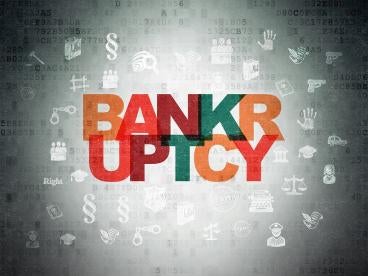Last week, the U.S. Supreme Court in Husky International Electronics, Inc. v. Ritz held a chapter 7 debtor accountable for “actual fraud” despite the absence of a specific fraudulent misrepresentation. The Court’s expansive reading of section 523(a)(2)(A) of the Bankruptcy Code gives creditors a new weapon in their fight to attack the discharge of their debts.
Husky is a supplier of components used in electronic devices. Between 2003 and 2007, Husky supplied Chrysalis Manufacturing Corp. with product and during that period, Chrysalis incurred a six-figure debt to Husky. Daniel Ritz served as a director of Chrysalis and owned at least 30 percent of the common stock. During this four year time period, Ritz initiated several large cash transfers from Chrysalis to other entities that Ritz controlled—funds that could have been used to pay Chrysalis’s creditors, including Husky, which was owed approximately $164,000. Husky subsequently sued Ritz under a provision of Texas law that holds a corporate shareholder liable for the corporation’s fraudulent transfers. Ritz then filed for protection under chapter 7 of the Bankruptcy Code.
Husky initiated an adversary proceeding in Ritz’s bankruptcy case to hold Ritz personally responsible for the debt and to object to the discharge of its debt under section 523(a)(2)(A) of the Bankruptcy Code. Under the Bankruptcy Code, a debtor’s assets are distributed to creditors and then the creditors’ debts are discharged—permitting a debtor a fresh start. However, the Bankruptcy Code does not permit a discharge and fresh start if there is evidence of misconduct by the debtor. In particular, section 523(a)(2)(A) provides that an individual debtor may not receive a bankruptcy discharge for debts for money or credit obtained by “false pretenses, a false representation, or actual fraud….”
The district court held that Ritz was personally liable for Chrysalis’s debts to Husky under Texas law but that the credit was not obtained by “actual fraud” as that term is used section 523(a)(2)(A). The Fifth Circuit Court of Appeals affirmed, holding that a necessary element of “actual fraud” is a misrepresentation from the debtor to the creditor. Last week, however, the Supreme Court reversed the Fifth Circuit, holding that “[t]he term ‘actual fraud’ in § 523(a)(2)(A) encompasses forms of fraud, like fraudulent conveyance schemes, that can be effected without false representation.”
The Court’s analysis begins with a short statutory interpretation that plainly points out that Congress would not have included “false representation” in the same sentence as “actual fraud” if it intended them to mean the same thing or for one to be an element of the other. The Court was also influenced by the historical meaning of “actual fraud”, noting that at common law, courts did not require the presence of an inducement or false misrepresentation to give rise to “actual fraud.” The Court chose to follow this precedent.
Interestingly, the Court addressed but did not rule on the question of whether Ritz actually “obtained” debt through the fraudulent conveyances as typically, a transferor does not obtain debt in a fraudulent conveyance. However, Ritz undeniably had an interest in the entities to which he transferred the Chrysalis assets and the Court left it to the lower court to determine whether the debt to Husky was “obtained” through Ritz’s actually fraudulent asset transfer conspiracy.
Husky resolves a circuit split—solidifying an expansive interpretation of section 523(a)(2)(A). The Court’s expansive interpretation of section 523(a)(2)(A) unequivocally puts another arrow in the creditor’s quiver—allowing creditors to avoid the discharge of their debts when it is clear that the debtor has actively moved assets prepetition to avoid payment. This decision should also further serve to deter debtors and their principals from transferring assets to other related entities to avoid payments to creditors. The Supreme Court’s decision not only appears correct from a statutory construction and historical perspective, but it is also consistent with the notion that the equities in the bankruptcy court will favor the honest but unfortunate debtor, which is consistent with what practitioners have come to expect from the bankruptcy process.




 i
i


